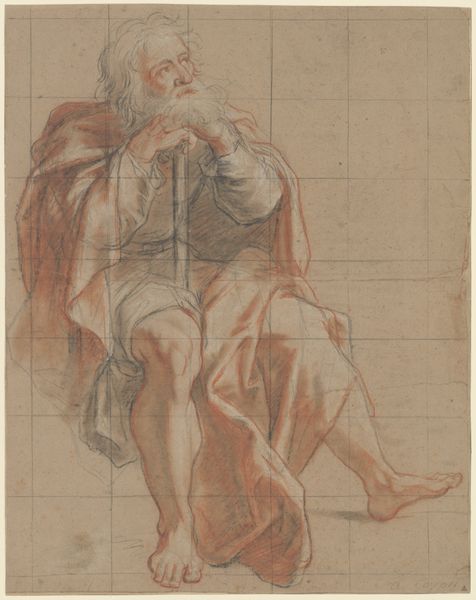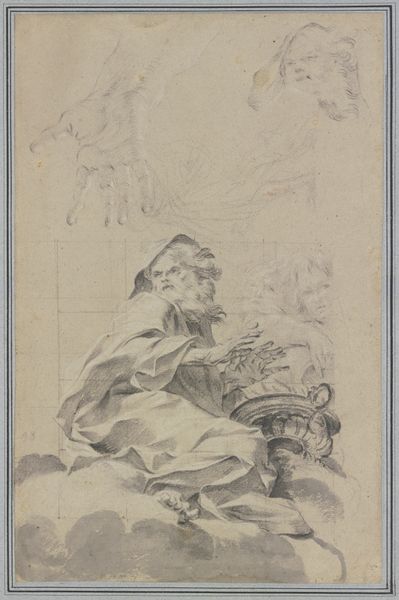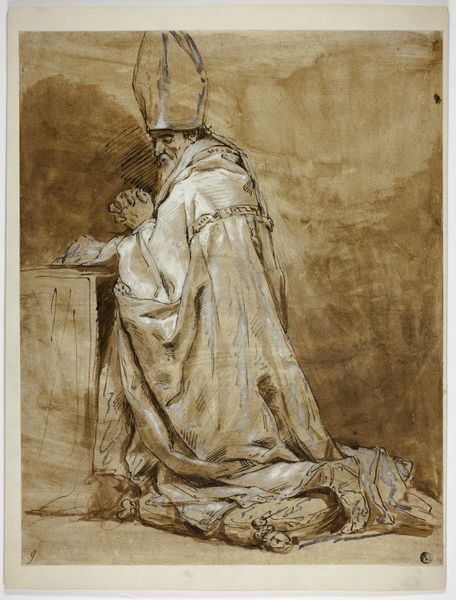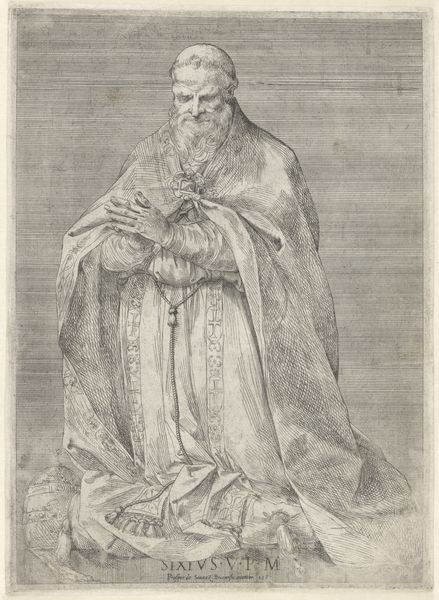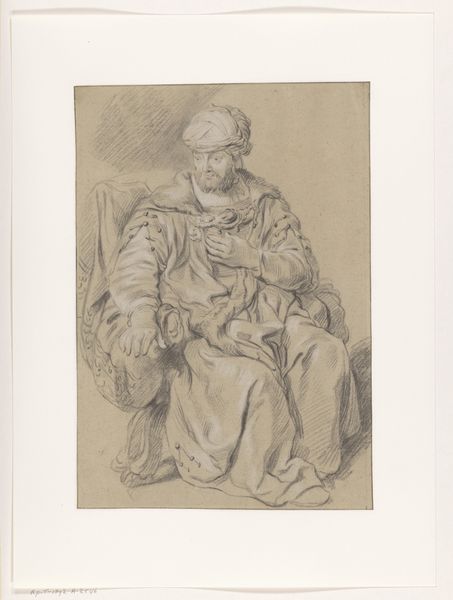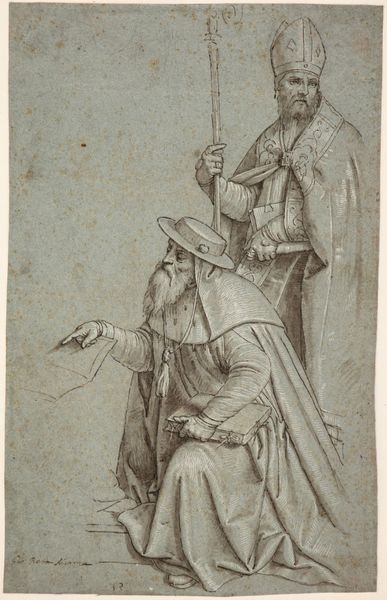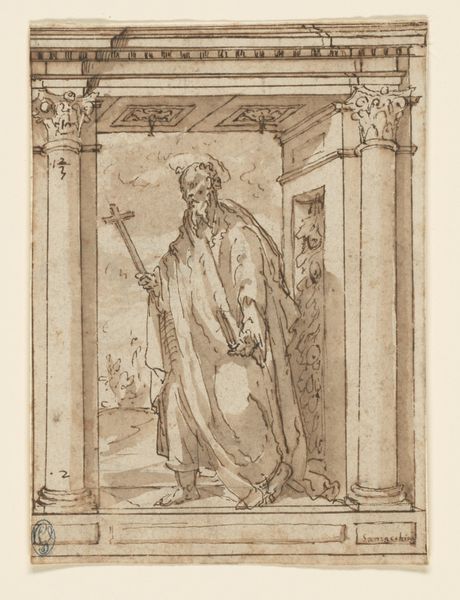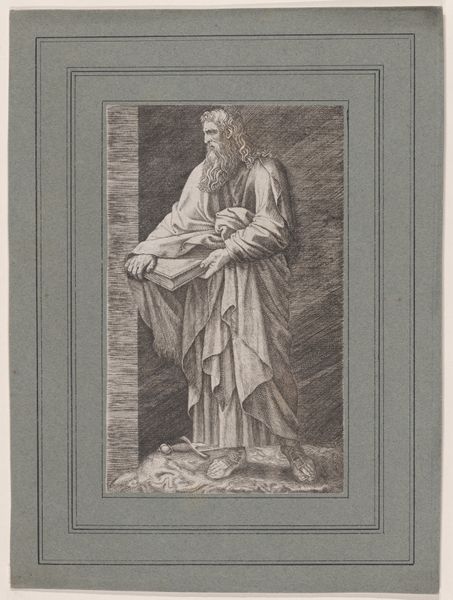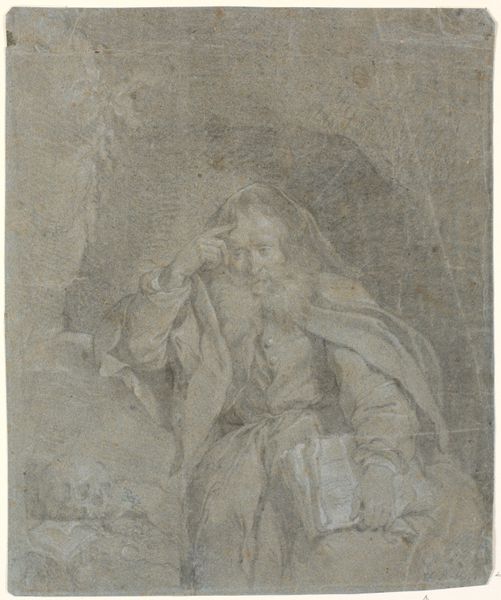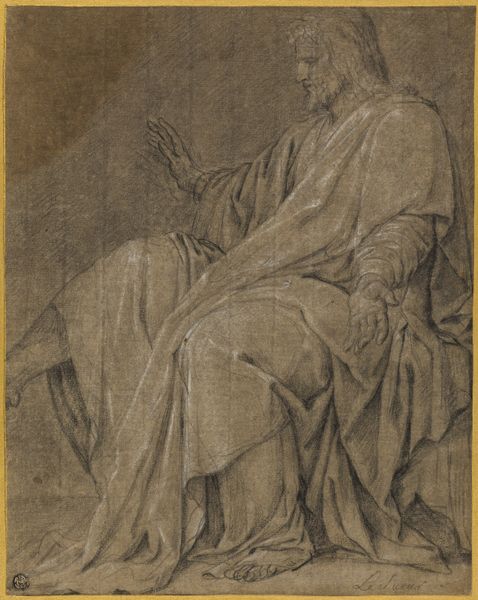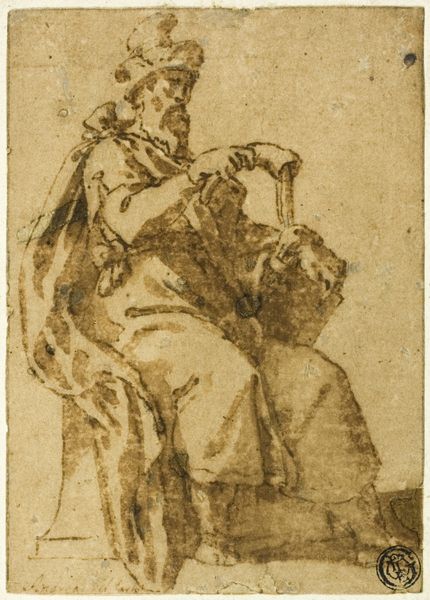
drawing, ink, charcoal
#
portrait
#
drawing
#
baroque
#
charcoal drawing
#
ink
#
portrait drawing
#
charcoal
#
history-painting
Dimensions: 241 mm (height) x 173 mm (width) (bladmaal)
Editor: This drawing, "Siddende profet," or "Seated Prophet," by Giovanni Battista Merano, created sometime between 1632 and 1698, uses ink and charcoal to depict a figure intensely focused on an open book. It has a very solemn feeling, like a quiet moment of contemplation. What stands out to you in this piece? Curator: I’m immediately drawn to how this image reflects the socio-political dynamics of religious authority at the time. Consider the prophet's act of reading: access to texts, particularly religious ones, was power. Merano’s choice to depict this figure in such a state invites us to think about who had access to knowledge, and how that access shaped their influence. How does his posture, the draping of his robes, contribute to this sense of authority? Editor: I see what you mean. His robes do seem to amplify his presence. They seem carefully rendered and ornate. Almost theatrical, in a way. Does the Baroque style play a part in this amplified presence? Curator: Precisely! The Baroque era was all about drama and emotional impact. Merano utilizes the Baroque aesthetic to portray not just a religious figure, but a figure imbued with a certain performative authority. Consider the limited color palette—the inks and charcoals lend a timelessness and austerity. How does the relatively monochromatic drawing invite commentary on race and gender, knowing that portraiture was largely reserved for wealthy white men? Editor: It's interesting to consider the drawing in terms of access and representation. It makes you wonder about all the stories and perspectives that went unrecorded. Curator: Exactly. And by engaging with these historical gaps and silences, we can begin to unpack the power dynamics embedded within artistic representation itself. Considering also the lack of access to literacy by many poor uneducated Europeans, perhaps the prophet is a caricature? Editor: It gives me a lot to think about regarding how art reflects and reinforces societal structures, thanks! Curator: My pleasure. It’s these layers of context that enrich our understanding, isn't it?
Comments
No comments
Be the first to comment and join the conversation on the ultimate creative platform.
